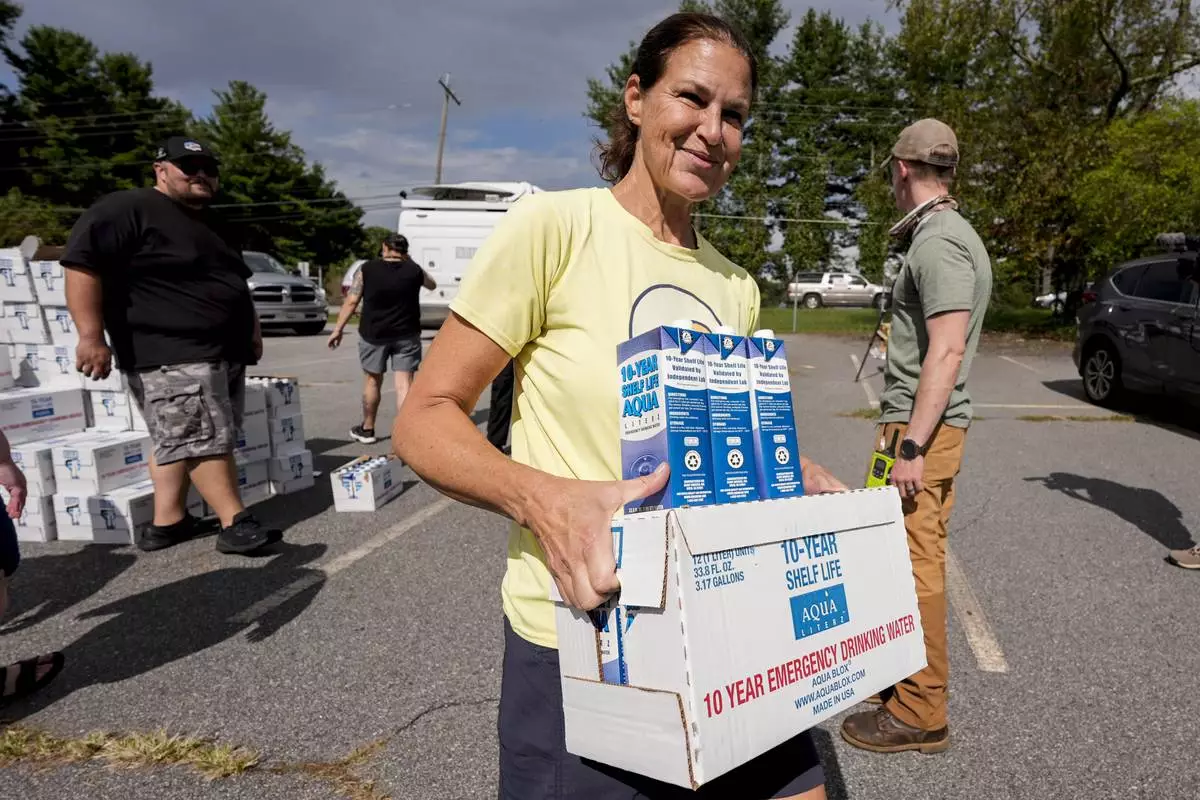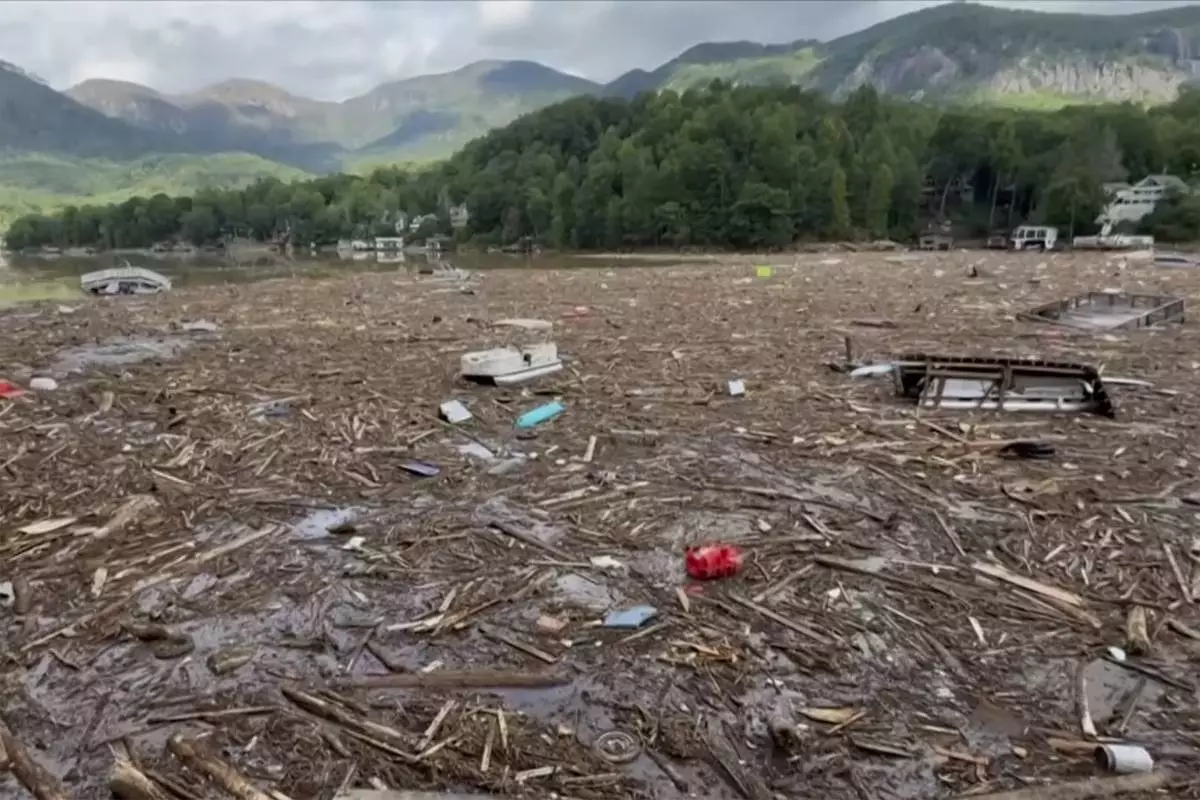NEW YORK (AP) — NASA's Webb Space Telescope has identified new clues about the surface of Pluto's largest moon.
It detected for the first time traces of carbon dioxide and hydrogen peroxide on the surface of Charon, which is about half Pluto's size.
Previous research, including a flyby from NASA's New Horizons spacecraft in 2015, revealed that the moon's surface was coated by water ice. But scientists couldn't sense chemicals lurking at certain infrared wavelengths until the Webb telescope came around to fill in the gaps.
“There's a lot of fingerprints of chemicals that we otherwise wouldn't get to see,” said Carly Howett, a New Horizons scientist who was not involved with the new study.
The research published Tuesday in the journal Nature Communications.
Pluto, a dwarf planet, and its moons are in the far fringes of our solar system in a zone known as the Kuiper Belt. Besides water ice, ammonia and organic materials were previously detected on Charon. Both Pluto and Charon are over 3 billion miles (4.83 billion kilometers) from the sun and are likely too chilly to support life.
Scientists think the hydrogen peroxide may have sprung from radiation pinging off water molecules on Charon's surface. The carbon dioxide might spew to the surface after impacts, said study co-author Silvia Protopapa from the Southwest Research Institute.
The latest detection is key to studying how Charon came to be and may help scientists tease out the makeup of other faraway moons and planets.
The Associated Press Health and Science Department receives support from the Howard Hughes Medical Institute’s Science and Educational Media Group. The AP is solely responsible for all content.

This image provided by NASA shows an enhanced color view of Pluto’s big moon Charon captured by the New Horizons spacecraft, July 14, 2015. (NASA via AP)
Desperate residents of the storm-battered mountains of western North Carolina lined up for water and food, hunted for cellphone signals and slogged buckets from creeks to flush toilets days after Hurricane Helene’s remnants deluged the region. Emergency workers toiled around the clock to clear roads, restore power and phone service, and reach people stranded by the storm, which killed at least 133 people across the Southeast, a toll expected to rise.
President Joe Biden was set to survey the devastation Wednesday.
Follow AP’s coverage of tropical weather at https://apnews.com/hub/weather.
Here’s the latest:
“We’ve been going door to door, making sure that we can put eyes on people and see if they’re safe,” Buncombe County Manager Avril Pinder said.
Pinder said she couldn’t specify a number of county residents who remain “unaccounted for” since the storm.
“We know that there are places that are still hard to access,” Pinder said. “There’s still trees down or power lines down or water is still moving rather rapidly. So we’re being strategic in trying to get out to those neighbors now. We have helicopter support, and we’ve been trying to fly into areas that we cannot go by foot or by boat or by car.”
More than 40 trillion gallons of rain drenched the Southeast United States in the last week from Hurricane Helene and a run-of-the-mill rainstorm that sloshed in ahead of it — an unheard of amount of water that has stunned experts.
That’s enough to fill the Dallas Cowboys’ stadium 51,000 times, or Lake Tahoe just once. If it was concentrated just on the state of North Carolina that much water would be 3.5 feet deep (more than 1 meter). It’s enough to fill more than 60 million Olympic-size swimming pools.
“That’s an astronomical amount of precipitation,” said Ed Clark, head of the National Oceanic and Atmospheric Administration’s National Water Center in Tuscaloosa, Alabama. “I have not seen something in my 25 years of working at the weather service that is this geographically large of an extent and the sheer volume of water that fell from the sky.″

Volunteers stage water for citizens in the aftermath of Hurricane Helene, Monday, Sept. 30, 2024, in Asheville, N.C. (AP Photo/Mike Stewart)

Flood debris from Hurricane Helene floats by in Rutherford County, N.C., Sunday, Sept. 29, 2024. (Tariq Bokhari via AP)

People wait to buy groceries as they stand in line outside an Ingles grocery store in the aftermath of Hurricane Helene, Monday, Sept. 30, 2024, in Asheville, N.C. (AP Photo/Mike Stewart)

People wait to buy groceries as they stand in line outside an Ingles grocery store in the aftermath of Hurricane Helene, Monday, Sept. 30, 2024, in Asheville, N.C. (AP Photo/Mike Stewart)














